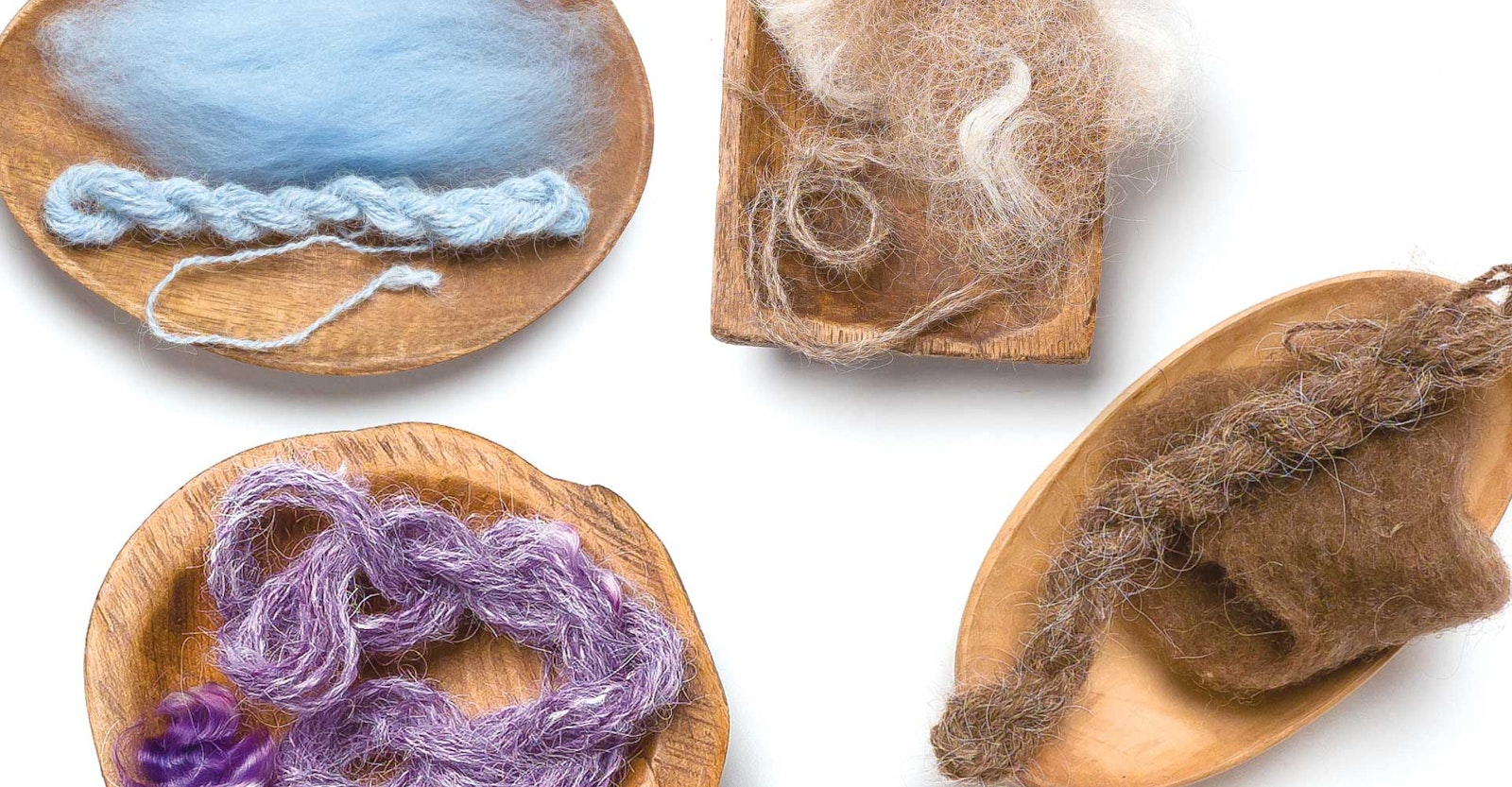Fiber from horses has been used in textile production for centuries, but generally only the long and coarse fibers from the mane and tail. These rigid fibers can be woven into hard-wearing upholstery fabrics as well as decorative items and jewelry. But as any equestrian knows, horses also shed an abundance of hair from their coats in early spring and late summer. Being quite short, smooth, and fairly coarse, this hair makes for a beautiful coat on the animal it comes from but a poor fiber for spinning. Certainly some intrepid equestrian spinners have managed to spin it into scratchy, ropelike yarn, but almost always these periodic sheddings are swept up from the barn aisle and thrown away.
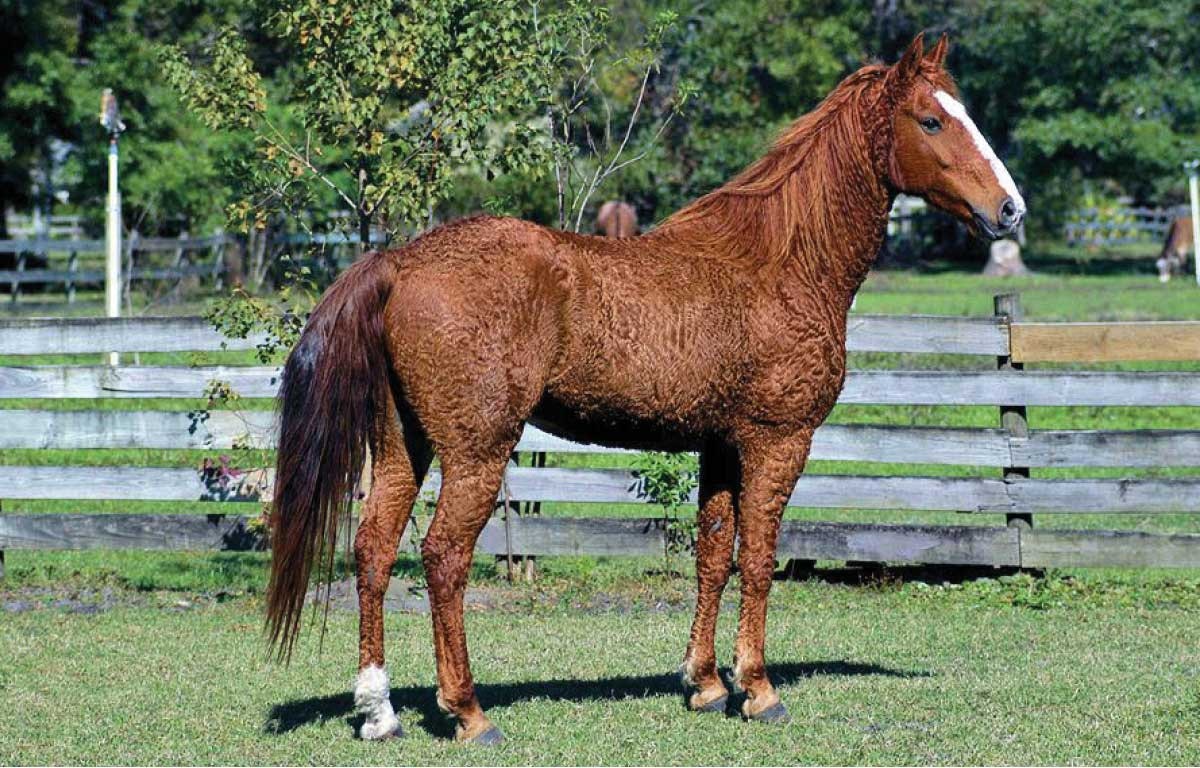
A North American Curly horse. Photo by Terry Schmidt, owner of Oh Boy
Recently, however, one type of horse has been able to lay claim to the title of fiber animal. Throughout history, the occasional horse with an unusually long and curly coat has cropped up in many places and many breeds. In the late nineteenth and early twentieth century, several such horses caught the eye of North American horse breeders. These horses included the descendants of curly-coated horses purposely bred by the Crow and Sioux as well as horses captured from feral populations. Over several generations, a new breed of horse was created, the North American Curly Horse, also known simply as the “Curly.” While the exact genetics aren’t clear, it appears that there are at least two genes responsible for Curlies’ unusual coats; most Curlies have at least a 50 percent chance of passing on their namesake trait to their offspring.
Curly horses are hardy and healthy, generally with very good temperaments, and can be hypoallergenic for some people who are usually allergic to horses. Their most striking feature, of course, is their coat: long and soft, with a characteristic curl to the fiber. Their manes and tails are similarly wavy. (Some Curlies even shed their mane and tail hair every year along with their coat.) The long and wavy qualities of the fiber allow it to be spun into a usable yarn, especially when blended with other fibers. The best Curly fiber is similar to mohair in fineness, softness, and curl, although it is typically much shorter.
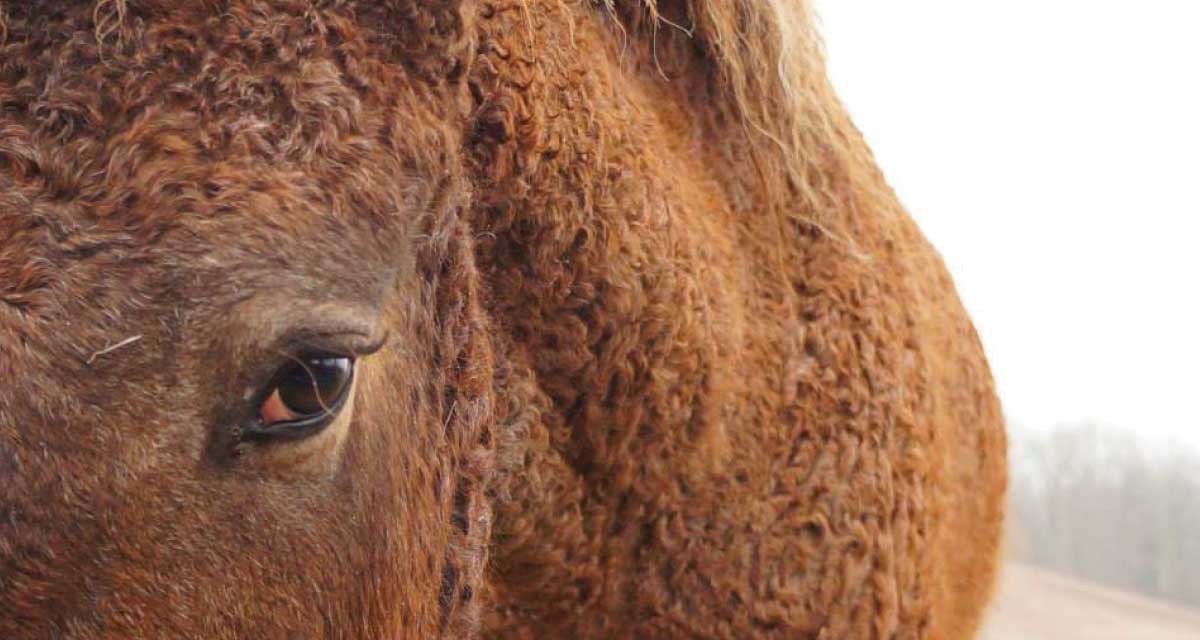
A very close-up look at the source of “Curly cashmere” (the fiber growing on the forehead and around the ears). Photo by Ella Pichon
The qualities of Curly fiber can vary greatly, depending on the horse, its age, and where on the body the fiber is collected. Some Curlies sport tight ringlets, whereas others have looser waves, and all show more pronounced curl in their longer winter coats. Fiber from foals and even some mature horses can be soft enough for next-to-the-skin garments, although most Curly fiber is coarser and better suited to nonwearable items. In general, the softest fiber comes from horses less than a year old, especially from the forehead and area around the ears; this has been nicknamed “Curly cashmere.” Fiber from the chest and between the front legs is also likely to be fairly soft, although not as soft as that from the area around the ears. Coarser fiber tends to grow on the back, rump, and legs. To keep the softest fiber from being contaminated with coarser hair, it is worthwhile to groom each area with separate brushes when the horse is shedding and place the fiber in separate labeled bags.
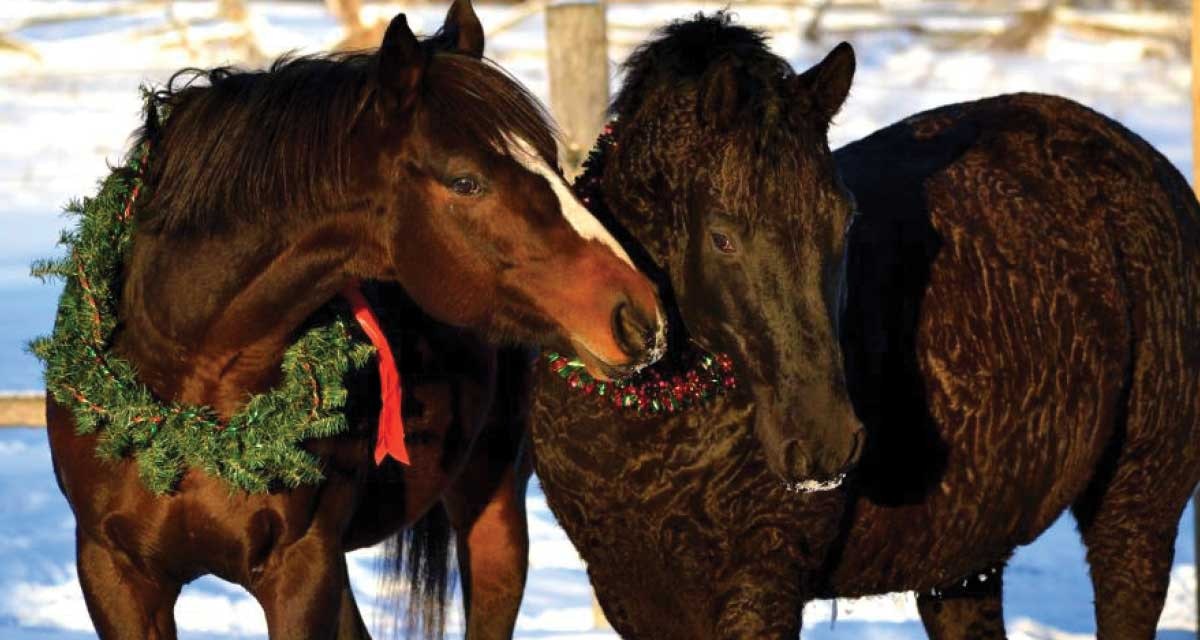
A typical smooth-coated horse (left) and a Curly horse (right). Photo by Jeanette Gladwin
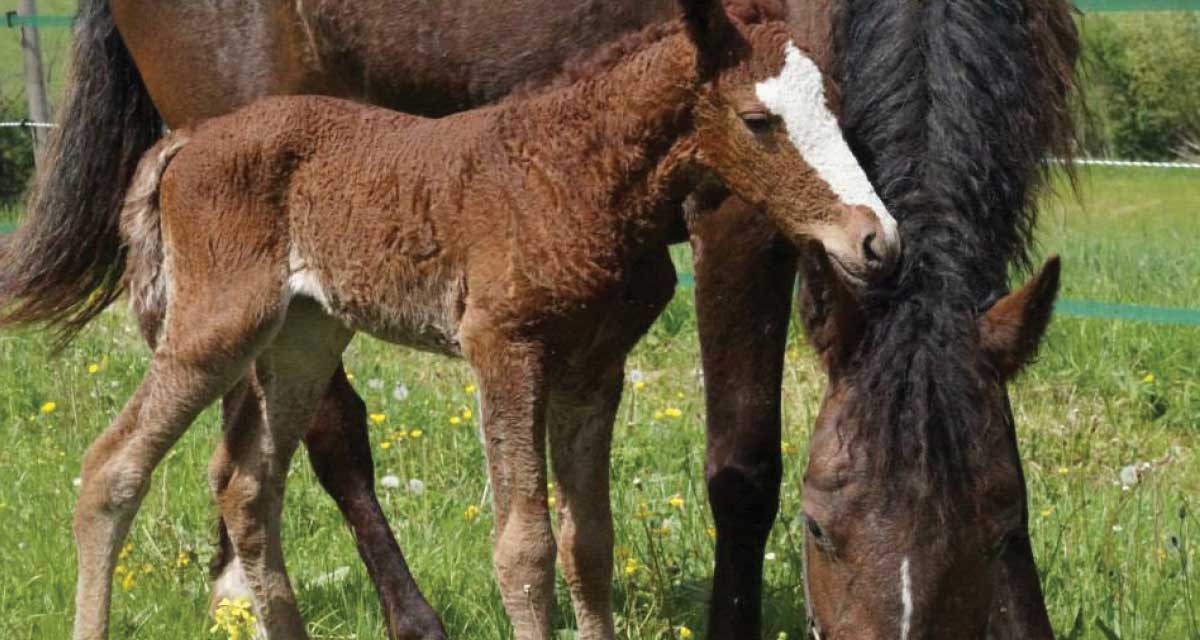
A mare and Curly foal. Photo by Ella Pichon
Preparation
Similar to llama, alpaca, and camel, fiber collected from Curly horses is low in oil but may be dusty. Curly fiber can be spun immediately after collection but may be more pleasant to work with after a light wash or rinse. This may be done by placing the fiber loosely in a mesh laundry bag or pillowcase and immersing in tepid or cool water, with or without adding a mild soap or detergent. The fiber can be spread out to dry in the sun or on a mesh bag over a drying rack (so the fibers don’t slip through). Don’t be alarmed if the fibers clump together: they may look matted or felted but pull apart easily.
Curly fiber is fairly short, from about 1⁄2 inch up to 3 inches, but usually falling in the 1-inch range. Generally too short for combs, Curly fiber can be prepared well using cotton cards or a drumcarder with a fine cloth. Although it does not easily felt, Curly fiber has a tendency to clump together, especially when stored for long periods of time. The fine teeth of cotton cards do a nice job of separating out the dense fibers and distributing them in a blend.
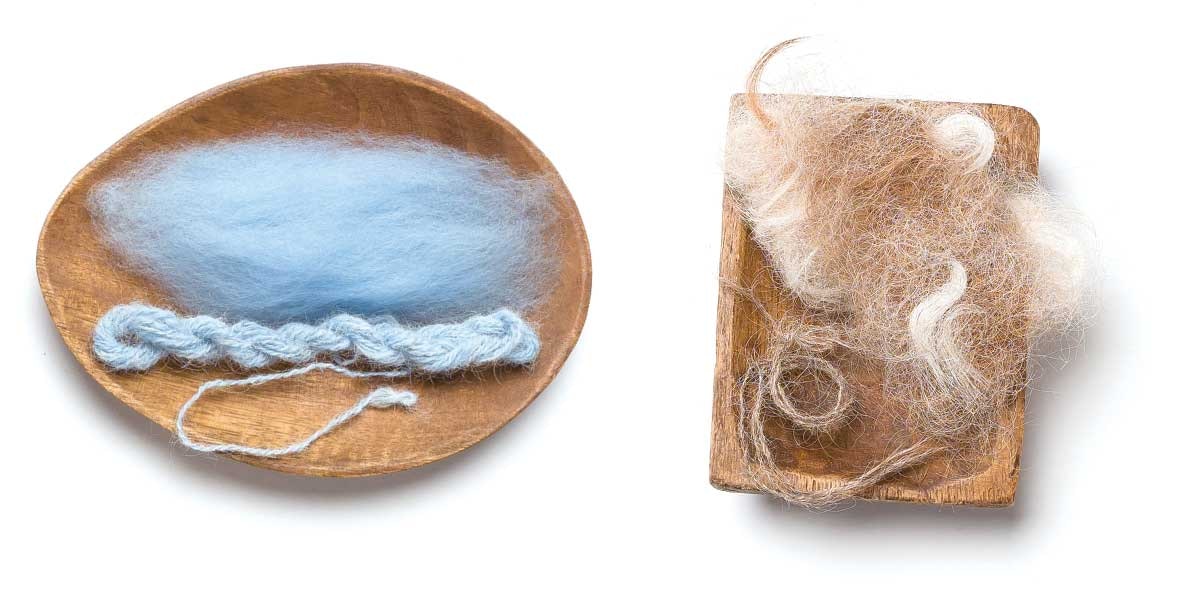
Left, A 2-ply of Curly horse and Falkland wool top. Right, 100% washed Curly fiber, spun into a 2-ply. Photo by Joe Coca
Spinning Curly Fiber
Because of its relatively short length and smooth texture with curl but no crimp, pure Curly can be a demanding and unforgiving fiber to spin on its own. Longer and finer Curly fiber produces the most successful yarn, but any type of Curly fiber requires a high degree of twist and a very even preparation. Smooth and even yarn is possible, but the higher twist needed to hold the yarn together can decrease its softness and suitability for next-to-skin items. The yarn below right comprises Curly fiber that was about 1 inch in length and was relatively coarse. It was carded on cotton cards and rolled into a tight puni around a wooden knitting needle, then spun on a tahkli spindle to add a high degree of twist. Even with this careful preparation, any thin or undertwisted spots pulled apart when the yarn was unwound for plying.
Curly fiber is easiest to spin when blended with other fibers, though it blends best with fibers of a similar length. It’s possible to blend Curly with longer-stapled fibers, but the preparation can be difficult as the fibers do not readily blend fully nor draft smoothly, resulting in yarns that are slightly lumpy and shed out the short Curly fibers easily. At left is a 50/50 blend of Curly fiber (about 1 inch in length) and Falkland wool with a 3- to 4-inch staple; note the unevenness of the yarn, with small “islands” of white Curly fiber in the midst of the blue wool.
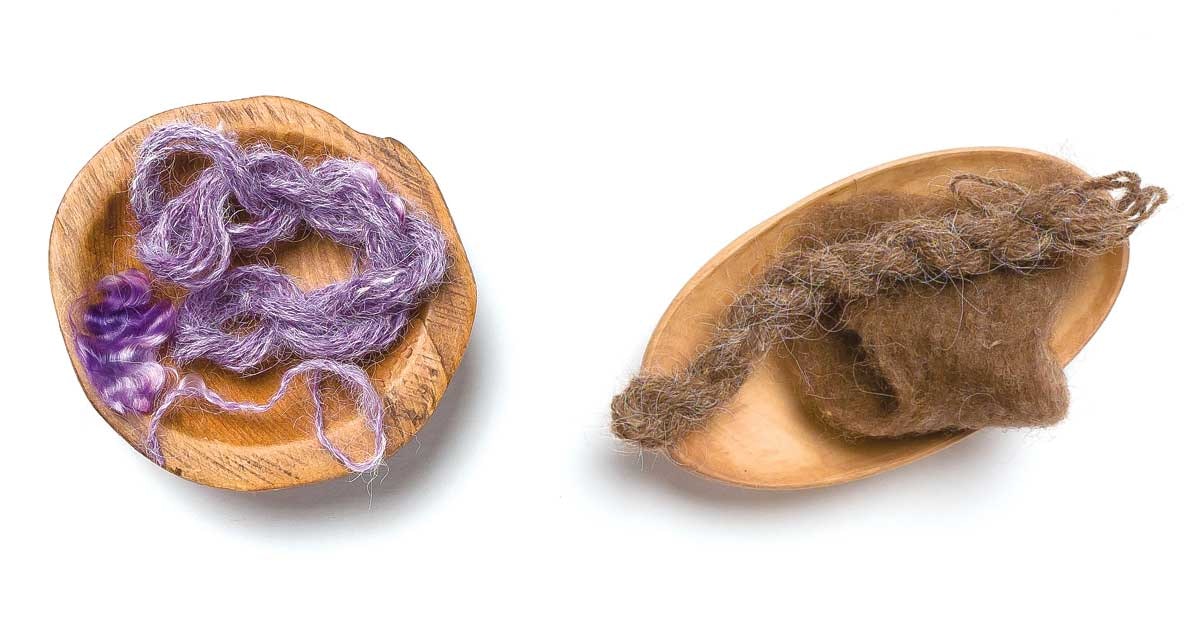
Left: A 2-ply yarn of Curly horse and dyed kid mohair. To match the staple of the Curly, the mohair was cut into 2- 3-centimeter lengths. Right: A chain-plied yarn of Curly/Portland wool singles. Photo by Joe Coca
Curly fiber blends well with fibers that are not only similar in length but also texture. Smooth, fine fibers like mohair and llama nicely complement the slightly wavy quality of the Curly fiber. The yarn above is a blend of kid mohair and Curly fiber in roughly equal amounts. The 3-inch mohair locks were first cut into thirds before blending with the Curly fiber on cotton cards into tight rolags. Cutting the mohair to a length similar to that of the Curly fiber made for easy blending and very smooth drafting, and the resulting yarn, shown in a two-ply, does not shed fibers easily.
Curly can be combined with crimpier fibers as well, though the ends of straighter Curly fibers will have a tendency to stick out from the yarn. The chain-plied yarn below right is approximately 50/50 Curly and Portland wool; both have a staple length of about 1 to 11⁄2 inches. The very different textures of the two fibers—smooth and wavy versus crimpy—required some additional passes on the handcards to ensure they were evenly blended before spinning but created a nice outerwear-type yarn with a slightly fuzzy halo.
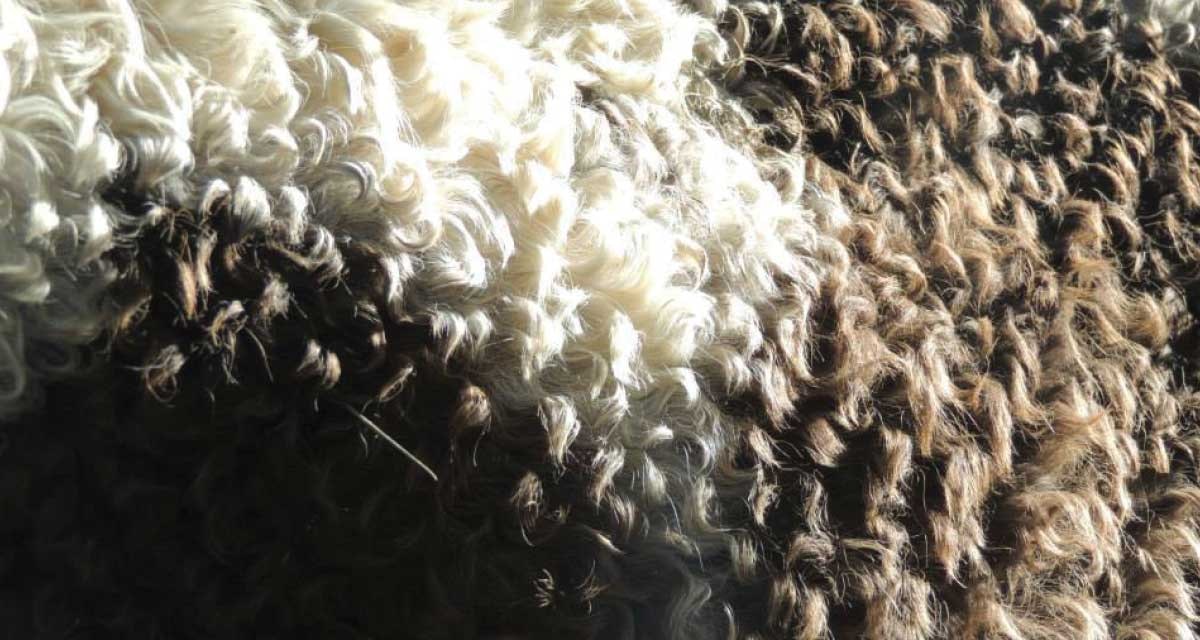
An up-close look at a Curly horse’s highly curled coat. Photo by Ella Pichon
For those looking for a faster method, Curly blends can be spun by the handful from a cloud-type preparation. Be sure to mix the fibers as much as possible by fluffing them up before spinning, and watch for clumps of pure Curly fiber—these can lead to weak spots in the finished yarn.
If you’re looking to try spinning Curly horse fiber yourself, visit the International Curly Horse Organization Fiber Guild website. The site lists Curly horse breeders who sell fiber and also features tips for collection and spinning as well as demonstration videos. Currently only two sources of Curly fiber are listed, so supply may be limited for this truly exotic fiber. If you’re lucky enough to know someone with a Curly horse, you can also ask them for their spring sheddings. Most Curlies are raised for breeding or sport purposes rather than fiber, and their shed coats are usually discarded. Curlies produce their longest and curliest fiber in the winter, and the spring shedding cycle will yield better fiber than in late summer. And if you’re an equestrian yourself, you may just want to consider having your next riding horse be a fiber animal too!
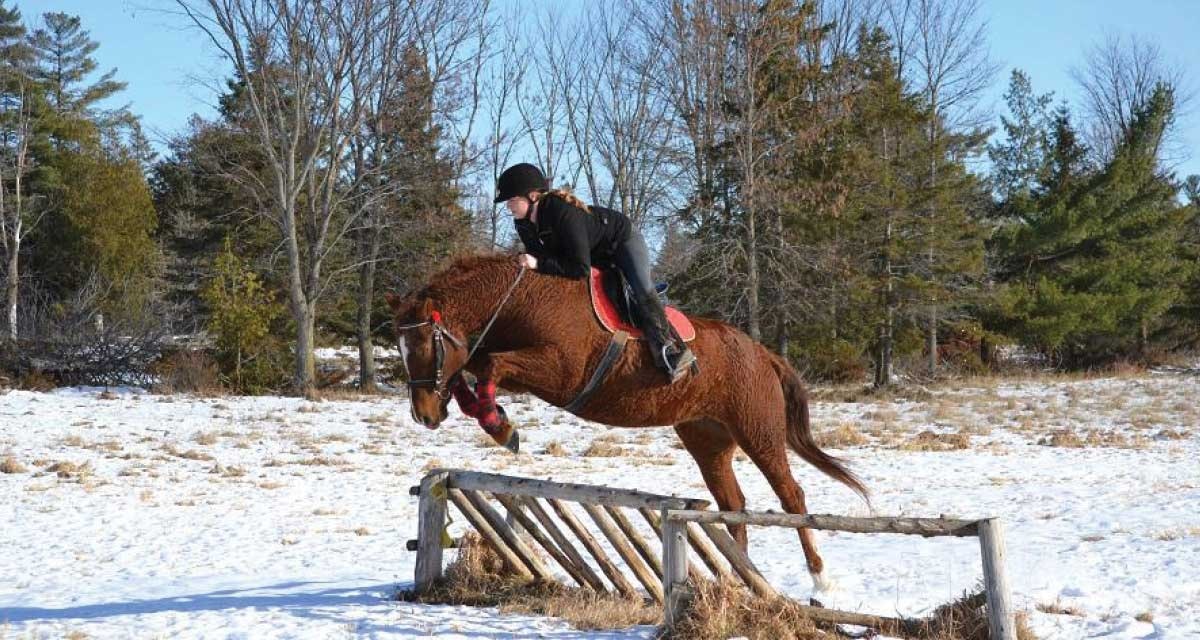
Athletic and even-tempered, Curly horses are typically sought after for sport rather than fiber purposes. Photo by Jeanette Gladwin
Leslie Ordal writes and works in health-care research in Toronto, Ontario, Canada. Her blog can be found at www.leslieordal.com.
Resources
International Curly Horse Organization Fiber Guild, www.ichocurlyhorses.com/fiber-guild.html
Originally published in the Winter 2016 issue of Spin Off.

